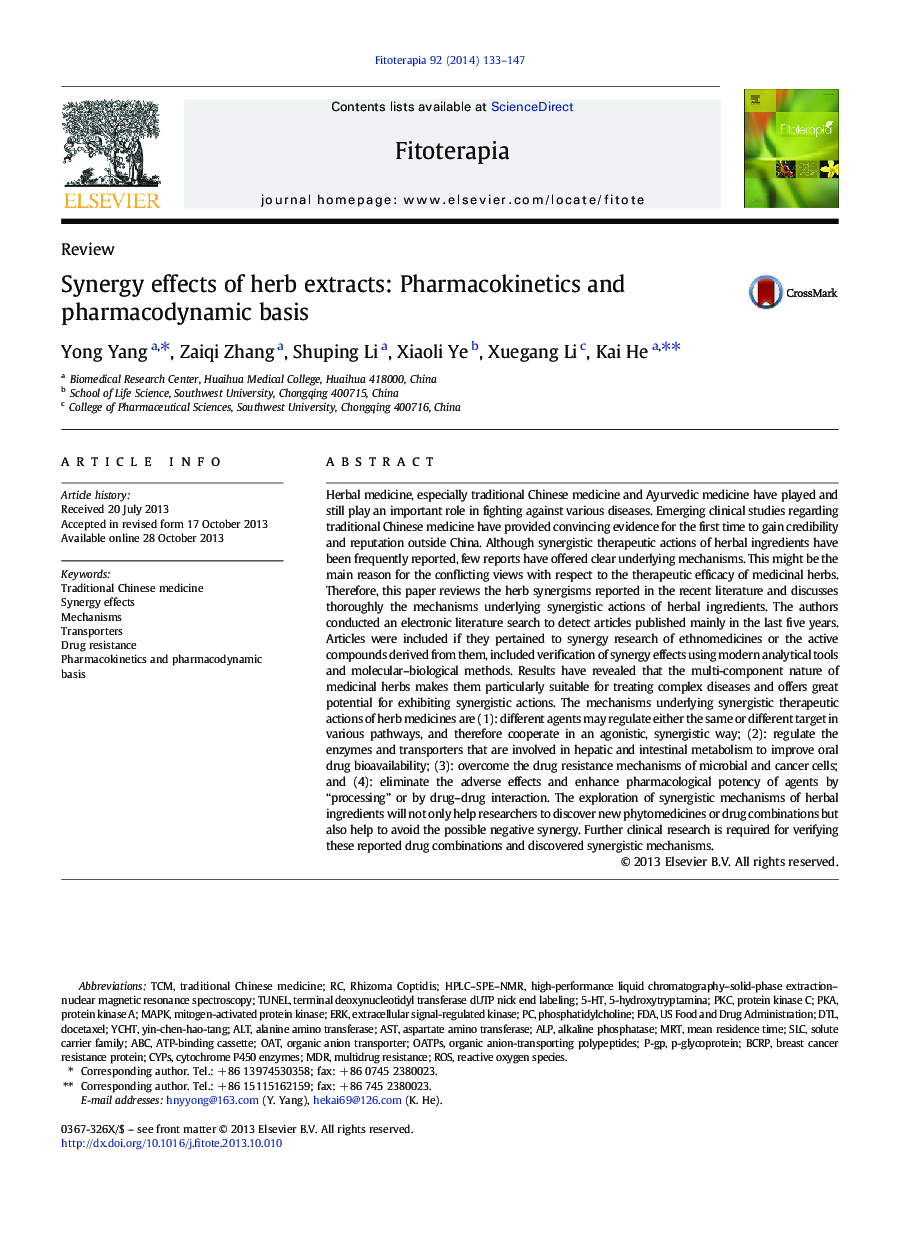| Article ID | Journal | Published Year | Pages | File Type |
|---|---|---|---|---|
| 2538594 | Fitoterapia | 2014 | 15 Pages |
Herbal medicine, especially traditional Chinese medicine and Ayurvedic medicine have played and still play an important role in fighting against various diseases. Emerging clinical studies regarding traditional Chinese medicine have provided convincing evidence for the first time to gain credibility and reputation outside China. Although synergistic therapeutic actions of herbal ingredients have been frequently reported, few reports have offered clear underlying mechanisms. This might be the main reason for the conflicting views with respect to the therapeutic efficacy of medicinal herbs. Therefore, this paper reviews the herb synergisms reported in the recent literature and discusses thoroughly the mechanisms underlying synergistic actions of herbal ingredients. The authors conducted an electronic literature search to detect articles published mainly in the last five years. Articles were included if they pertained to synergy research of ethnomedicines or the active compounds derived from them, included verification of synergy effects using modern analytical tools and molecular–biological methods. Results have revealed that the multi-component nature of medicinal herbs makes them particularly suitable for treating complex diseases and offers great potential for exhibiting synergistic actions. The mechanisms underlying synergistic therapeutic actions of herb medicines are (1): different agents may regulate either the same or different target in various pathways, and therefore cooperate in an agonistic, synergistic way; (2): regulate the enzymes and transporters that are involved in hepatic and intestinal metabolism to improve oral drug bioavailability; (3): overcome the drug resistance mechanisms of microbial and cancer cells; and (4): eliminate the adverse effects and enhance pharmacological potency of agents by “processing” or by drug–drug interaction. The exploration of synergistic mechanisms of herbal ingredients will not only help researchers to discover new phytomedicines or drug combinations but also help to avoid the possible negative synergy. Further clinical research is required for verifying these reported drug combinations and discovered synergistic mechanisms.
Graphical abstractSchematic diagram of the synergistic effects of the most widely used Chinese herb medicine: Rhizoma Coptidis.Figure optionsDownload full-size imageDownload high-quality image (197 K)Download as PowerPoint slide
